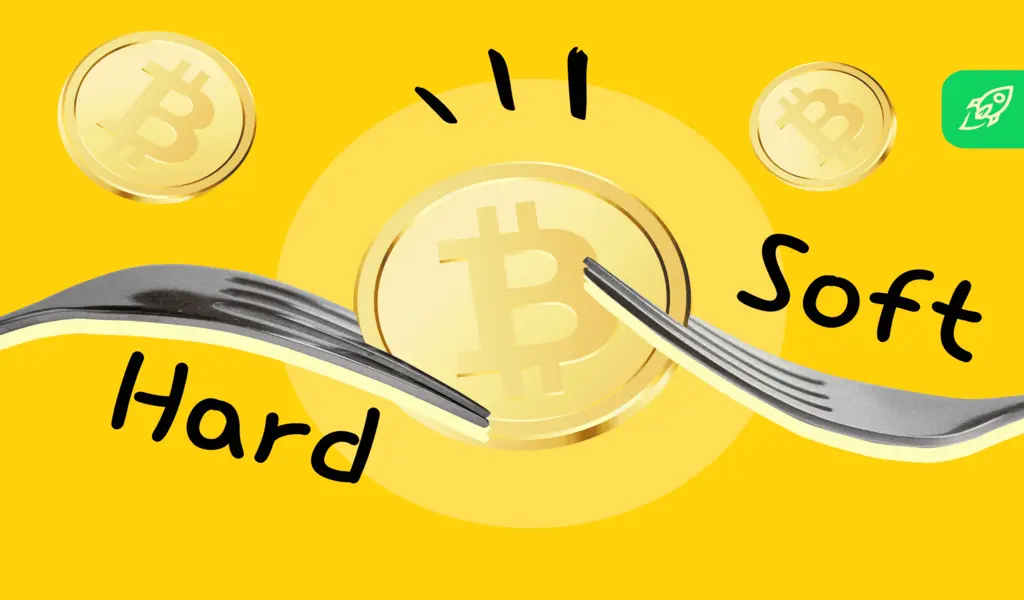Cryptocurrency
What are Soft Forks and Hards Forks? (Explained)

In the context of blockchain and cryptocurrency, the term “fork” or “forking” refers to a significant change or divergence in the blockchain’s underlying protocol. Forks can be categorized into two main types: soft forks and hard forks, each with its own implications for the blockchain and the cryptocurrency ecosystem. A soft fork is a backwards-compatible upgrade to the blockchain protocol.
It involves implementing changes that are compatible with the previous version, allowing older nodes to continue functioning within the updated network. In a soft fork, the rules of the blockchain are tightened, meaning that new blocks and transactions adhere to stricter criteria. Go URL if you are looking for a reliable trading platform to start your investment journey in cryptocurrencies.
On the other hand, a hard fork is a non-backwards-compatible upgrade to the blockchain protocol. It involves introducing changes that are incompatible with the previous version, creating a permanent split in the blockchain.
They allow for protocol upgrades, the introduction of new features, and the resolution of critical issues. Forks can also lead to community discussions and debates about the direction and governance of the blockchain network.
Participants in the cryptocurrency industry must understand the distinctions between soft and hard forks since they can affect overall value, network compatibility, consensus, and dynamics of the cryptocurrencies involved.
What is a soft fork?
Since cryptocurrency networks are decentralised, no centralised authority may impose updates or new features. Instead, consensus among developers and miners is required to make changes to the blockchain. Forks serve as a consensus mechanism in the cryptocurrency community.
Soft forks typically aim to introduce new features or address bugs while maintaining backward compatibility with the existing network. They are generally less disruptive since older nodes can still function with the new rules implemented.
On the other hand, hard forks are more significant and can occur for various reasons, such as improving scalability, integrity, or efficiency of the network. Hard forks often result in a divergence from the previous version, leading to the creation of a separate blockchain with new rules.
Disagreements among participants regarding the direction of the blockchain can also lead to hard forks, even if there is a lack of consensus. They can result in the creation of new cryptocurrencies, as well as debates and potential fragmentation within the community.
Proper communication and coordination among stakeholders are crucial during these events to ensure a smooth transition and minimize disruptions.
What is a hard fork?
Hard forks in cryptocurrencies are software updates that are not compatible with the previous version. They occur when nodes (participants in the network) introduce new rules that conflict with the rules followed by the old nodes.
As a result, a blockchain split occurs, creating two separate networks. After a hard fork, the two networks operate independently, with each following its own set of rules. New nodes can only communicate and interact with other nodes that have adopted the new version, while old nodes continue to operate based on the previous rules.
Both networks continue to propagate blocks and transactions, but they no longer share the same blockchain. However, after the fork, the two networks will have different blocks and transactions, leading to a divergence in their respective chains.
Hard forks can be contentious and often result from disagreements within the community regarding proposed changes to the cryptocurrency’s protocol. They can lead to the creation of new cryptocurrencies and can have significant implications for participants in terms of network compatibility, community support, and the value of the newly formed coins.
Hard forks vs. soft forks
Hard forks and soft forks in cryptocurrencies serve different purposes and have distinct implications. Contentious hard forks can create divisions within a community, as there may be disagreements regarding the proposed changes. On the other hand, planned hard forks allow for modifications to the software when there is a general consensus and agreement among participants.
Soft forks, in contrast, are a more gentle approach. They involve making changes that are backward compatible with the existing rules of the network.
This means that the new changes introduced in a soft fork cannot conflict with the old rules. While soft forks may impose limitations on the types of changes that can be implemented, they ensure compatibility and reduce the risk of network fragmentation.
If an update can be designed in a way that maintains compatibility with the existing rules, there is no need to worry about fragmenting the network. Soft forks provide the opportunity to introduce improvements or address specific issues without causing significant disruptions or divisions within the community.
SEE ALSO: Maker DAO’s MKR Surges Amid Market Uptick: Can It Reach $1,500?





























